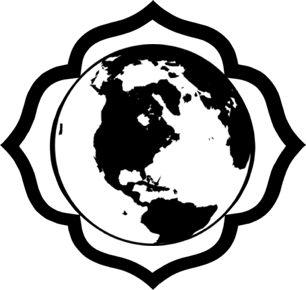Transcendence or Transformation?
Historically, in Western Culture, the transcendent, rather than the transformative, approach to realization has had the dominant emphasis. Transcendence posits a God outside of Creation or, psychologically, a higher self or immortal soul above and superior to the personality. A transcendent realization of the higher nature implies a discrimination between higher and lower or a dualistic conception of "good and bad". Transcendence requires an act of will and effort to attain and live by the spiritual identification.
This approach reflects a masculine predisposition to hierarchical and rational thinking that is embodied in the dominance of masculine qualities in the traditional institutions of society. Our world-view has been dualistic and linear. We have felt ourselves to be separate from nature, God and each other. Success at all levels has been assumed to require an effort of mind and will to overcome one's lower nature and conflicting forces and to achieve one's aim. This path therefore, requires identification with the higher principle, and the overcoming of the lower. Practically it means, for the typical adherent, an effort to realize one's ideal at the cost of one's personal emotions or feelings -- which are discounted.
The path of transformation has always been around but today it is gaining increasing respect and conscious practice. It is related to the development of psychology and the increasing recognition of the equality of the feminine principle. It is the path of God Immanent or the divine within creation. Psychologically, it acknowledges the rightness of one's experience and one's own intrinsic participation in spirit or a multidimensional Self.
In the transformative approach, one seeks to open to and accept what is there within one's experience. Rather than judging or fighting against the various parts of oneself, there is acceptance and an allowing which transforms that experience by unfolding something that is implicit within it. Even so-called negative elements, therefore, contain valuable information. This path is more feminine than the transcendent path and appeals consequently to women. In particular, it encourages acceptance and expression of one's emotions and feelings. With expression comes awareness and integration.
Which path is right or best? Both are. Perhaps one approach may suit one person better than another or an individual may take both approaches at different times. Recognizing the validity of individual differences helps to appreciate and understand one another better. However, each path can be misunderstood and misapplied by those on it. For the path of transcendence to be effective, the higher principle has to be an experience of the living spirit and not just a mental formulation or ideal -- the latter can not produce a fundamental integration. On the path of transformation, one must go beyond merely accepting one's experience as it appears to be and instead allow what is within it to unfold and become conscious. This involves a continual endeavor to refrain from identification, as one allows oneself to be without preconceptions of how one should be.
Both these paths have their associated myths and archetypes -- such as, the hero, the wise one or the magician and the shaman. These all lead away from limiting and finite expressions of personal identity, toward the boundless landscape of Being. Along this Way, the seeming opposites and paradoxes find their place and fusion. We each, after all, have everything within us, and in realizing our wholeness find the outer dualities and contradictions are resolved as well.
